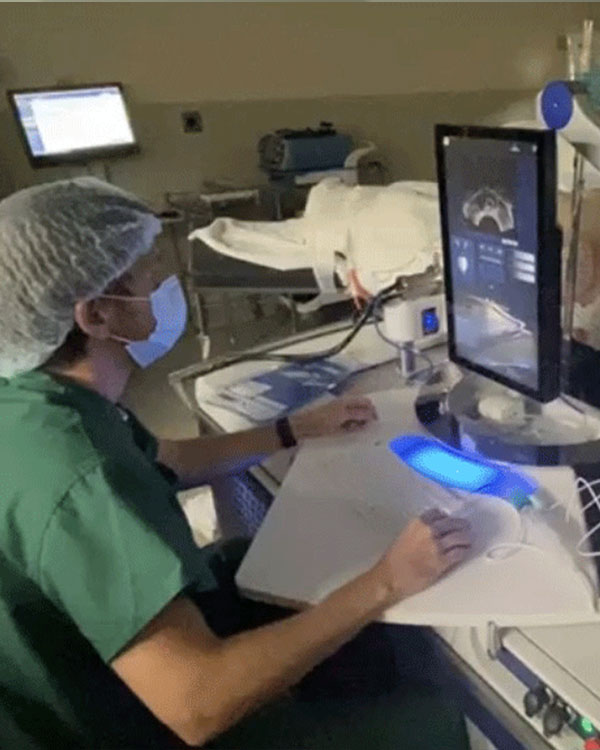
A Sylvester research team has found that focal high intensity focused ultrasound (HIFU) is an effective strategy for treating localized prostate cancer while minimizing side effects.
“We conducted the first U.S. study to show the safety and efficacy of focal HIFU in prostate cancer patients,” said Bruno Nahar, M.D., assistant professor of urologic oncology at the Miller School of Medicine. “It offers an alternative treatment for carefully selected patients with localized prostate cancer who are interested in preserving their quality of life.”
Surgery and radiation therapy are the standard treatments for prostate cancer, said Dr. Nahar. However, they can have significant side effects, including incontinence and erectile dysfunction. With focal HIFU therapy, high-energy ultrasound waves deliver heat targets to the cancerous areas, rather than the entire prostate gland. The minimally invasive procedure is done on an outpatient basis, and patients typically go home the same day.
Dr. Nahar said the location, size, and aggressiveness of the tumor are important considerations for focal HIFU treatment. “The tumor needs to be localized to one lobe of the prostate gland, and not be a large-volume cancer,” he said.
Although HIFU received U.S. Food and Drug Administration approval for prostate ablation in November 2015, the University of Miami is one of the first U.S. institutions to offer this procedure, Dr. Nahar said. “HIFU can bridge the gap between monitoring the cancer and more invasive procedures, such as radiation or surgery.”
Dr. Nahar is the first author of the study, “Prospective Evaluation of Focal High Intensity Focused Ultrasound for Localized Prostate Cancer,” published in the Journal of Urology. The senior author is Dipen J. Parekh, M.D., chief operating officer of the University of Miami Health System, chair of urology, and the Dr. Victor Politano Endowed Chair in Clinical Urology.
“This procedure is making a very positive and meaningful difference in the lives of patients because the side effects are significantly less in terms of urinary incontinence and erectile dysfunction compared to a total prostate removal or radiation therapy,” said Dr. Parekh.
The study included 52 Sylvester patients with localized disease who were treated with HIFU from January 2016 to July 2018. About 85 percent had a negative biopsy in the treated area, and urinary control and sexual functioning outcomes were very positive, Dr. Nahar said. “While the short-term oncologic outcomes are promising, longer follow-up research is required to establish long-term benefits.”